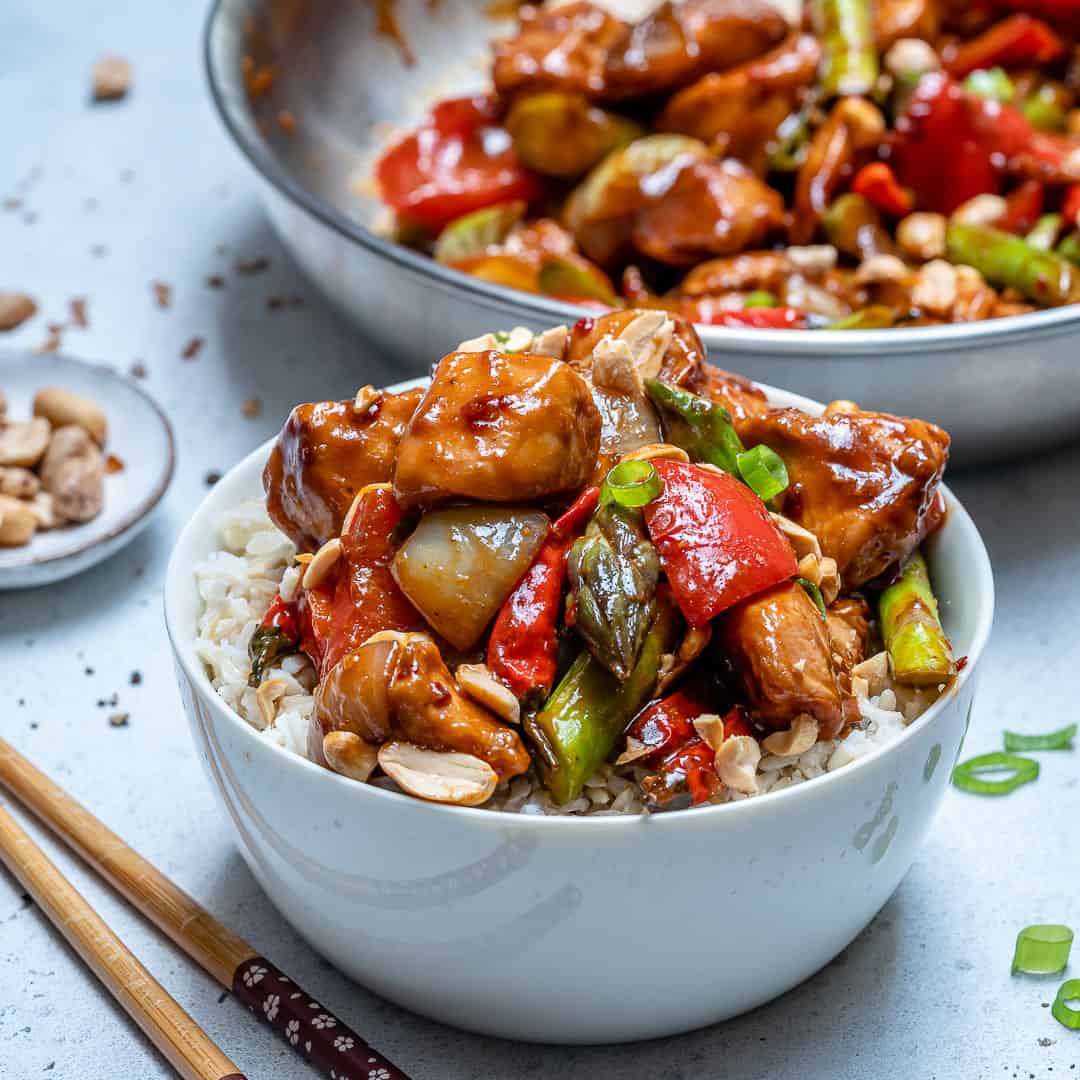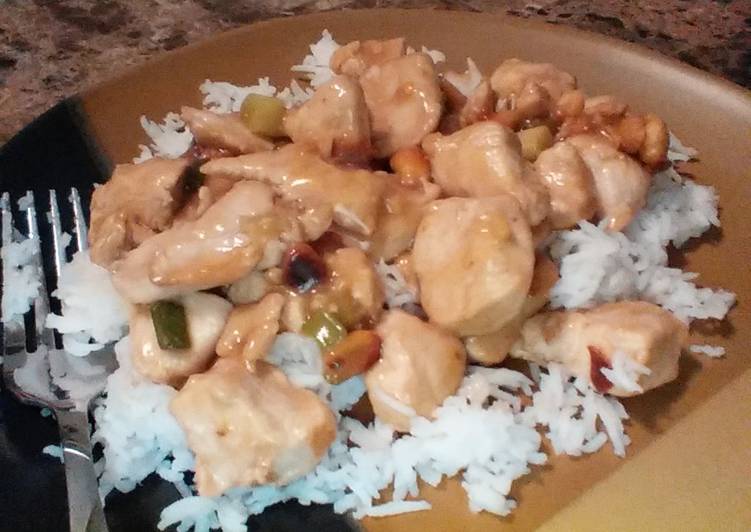Embark on a tantalizing culinary adventure with Malaysian kung pao chicken, a vibrant and flavorful dish that has captivated taste buds across the globe. Originating from the Sichuan province of China, this delectable dish has found a cherished place in Malaysian cuisine, where it has been adapted to suit local palates and ingredients.
Malaysian kung pao chicken is characterized by its tantalizing blend of sweet, savory, and spicy flavors. The succulent chicken is marinated in a symphony of aromatic spices, then stir-fried with a vibrant array of vegetables, creating a dish that is both visually appealing and irresistibly delicious.
Introduction
Kung Pao chicken is a popular dish in Malaysia, originating from the Sichuan province of China. It is known for its spicy and flavorful taste, and is typically made with chicken, peanuts, vegetables, and a spicy sauce.
The dish is believed to have been created by Ding Baozhen, a governor of Sichuan in the 19th century. Ding was known for his love of spicy food, and is said to have created Kung Pao chicken as a way to impress his guests.
Common Ingredients
Malaysian kung pao chicken recipes typically include the following ingredients:
- Chicken
- Peanuts
- Vegetables (such as bell peppers, onions, and celery)
- Ginger
- Garlic
- Soy sauce
- Rice vinegar
- Chili peppers
- Sesame oil
Ingredients
Malaysian kung pao chicken recipes typically call for a combination of fresh and pantry ingredients. Here is a table listing the essential ingredients and their purpose in the dish:
| Ingredient | Quantity | Unit | Purpose |
|---|---|---|---|
| Chicken | 1 pound | boneless, skinless | The main protein of the dish |
| Oil | 2 tablespoons | vegetable or peanut | For frying the chicken and vegetables |
| Onion | 1 | medium | Adds sweetness and crunch |
| Red bell pepper | 1 | medium | Provides color and sweetness |
| Green bell pepper | 1 | medium | Adds color and a slightly bitter flavor |
| Ginger | 1 tablespoon | minced | Provides a warm and spicy flavor |
| Garlic | 2 cloves | minced | Adds a savory and aromatic flavor |
| Soy sauce | 1/4 cup | low-sodium | Provides a salty and umami flavor |
| Rice vinegar | 2 tablespoons | white or brown | Adds acidity and balance to the sauce |
| Sugar | 1 tablespoon | brown or white | Adds sweetness and depth of flavor |
| Cornstarch | 1 tablespoon | dissolved in 2 tablespoons water | Thickens the sauce |
| Peanuts | 1/4 cup | roasted, unsalted | Adds a crunchy texture and nutty flavor |
| Sesame seeds | 1 tablespoon | toasted | Provides a nutty flavor and garnish |
Cooking s
Prepare a delectable Malaysian kung pao chicken dish by following these easy steps:
Marinating the Chicken
To create flavorful chicken, marinate it in a mixture of soy sauce, cornstarch, sugar, and sesame oil. Allow it to rest for at least 30 minutes, or preferably overnight.
Stir-Frying the Vegetables
Heat oil in a wok or large skillet over high heat. Add diced bell peppers, onions, and peanuts, and stir-fry until tender and slightly browned.
Combining the Sauce
In a separate bowl, combine chicken broth, soy sauce, sugar, rice vinegar, sesame oil, and chili paste. Bring to a simmer and cook until thickened.
Variations

Malaysian kung pao chicken recipes offer a range of variations that cater to diverse taste preferences.
The choice of chili peppers significantly influences the spiciness and flavor profile of the dish. Commonly used chili peppers include the bird’s eye chili, known for its intense heat, and the less spicy red chili peppers.
Vegetable Variations
The selection of vegetables can also vary, adding different textures and flavors to the dish. Some popular additions include carrots for their sweetness, bell peppers for their crunch, and bamboo shoots for their unique texture.
Serving Suggestions
Malaysian kung pao chicken can be served in various ways, depending on the occasion and personal preferences. Whether it’s a casual family dinner or a formal gathering, this dish can be presented to impress.
As a main course, kung pao chicken pairs well with steamed rice, fried rice, or noodles. These accompaniments provide a neutral base that complements the bold flavors of the chicken.
Garnishes
To enhance the presentation and add freshness, consider garnishing the dish with chopped green onions, cilantro, or sesame seeds. These garnishes not only add visual appeal but also provide an extra layer of flavor and texture.
Presentation
For special occasions, kung pao chicken can be presented in a more elaborate manner. Serve it in a large, shallow bowl or on a platter, garnished with a colorful arrangement of vegetables such as bell peppers, carrots, and snap peas.
This presentation creates a visually stunning centerpiece for the table.
Nutritional Information
The nutritional value of Malaysian kung pao chicken varies depending on the ingredients and cooking method used. However, a typical serving (approximately 1 cup) of this dish provides the following nutrients:
This information is an approximation and may vary based on the specific recipe and serving size.
Calorie Content
A serving of kung pao chicken contains approximately 450-550 calories, making it a moderately high-calorie dish.
Protein Content
Kung pao chicken is a good source of protein, with approximately 25-30 grams per serving. This protein content contributes to satiety and supports muscle health.
Carbohydrate Content
The carbohydrate content of kung pao chicken varies depending on the amount of rice or noodles served with it. A typical serving with a moderate amount of rice or noodles provides approximately 40-50 grams of carbohydrates.
Fat Content
Kung pao chicken is a moderately high-fat dish, with approximately 20-25 grams of fat per serving. The fat content comes from the oil used for cooking, as well as the peanuts and sesame oil typically added to the dish.
Sodium Content
Kung pao chicken is relatively high in sodium, with approximately 800-1000 milligrams per serving. This is due to the use of soy sauce and other salty ingredients in the dish.
| Nutrient | Amount per Serving |
|---|---|
| Calories | 450-550 |
| Protein | 25-30 grams |
| Carbohydrates | 40-50 grams |
| Fat | 20-25 grams |
| Sodium | 800-1000 milligrams |
Final Thoughts

Whether you savor it as a main course or indulge in it as a delectable appetizer, Malaysian kung pao chicken is a culinary masterpiece that will leave you craving for more. Its versatility allows for endless variations, ensuring that each culinary experience is a unique and unforgettable journey.
So, gather your ingredients, fire up your wok, and let us guide you through the enchanting world of Malaysian kung pao chicken.
Frequently Asked Questions
What is the origin of kung pao chicken?
Kung pao chicken traces its roots back to the Sichuan province of China, where it was named after Ding Baozhen, the governor of Sichuan from 1881 to 1884, who was affectionately known as “Kung Pao.”
What are the key ingredients in Malaysian kung pao chicken?
Malaysian kung pao chicken typically includes chicken, peanuts, chili peppers, garlic, ginger, soy sauce, rice vinegar, and sugar.
What are some variations of Malaysian kung pao chicken?
Variations of Malaysian kung pao chicken can include using different types of chili peppers for varying levels of spiciness, adding vegetables like bell peppers or carrots, or incorporating different sauces for a unique flavor profile.
How is Malaysian kung pao chicken typically served?
Malaysian kung pao chicken is commonly served over steamed rice or noodles, and can be garnished with chopped green onions, sesame seeds, or crushed peanuts for an extra burst of flavor and texture.
